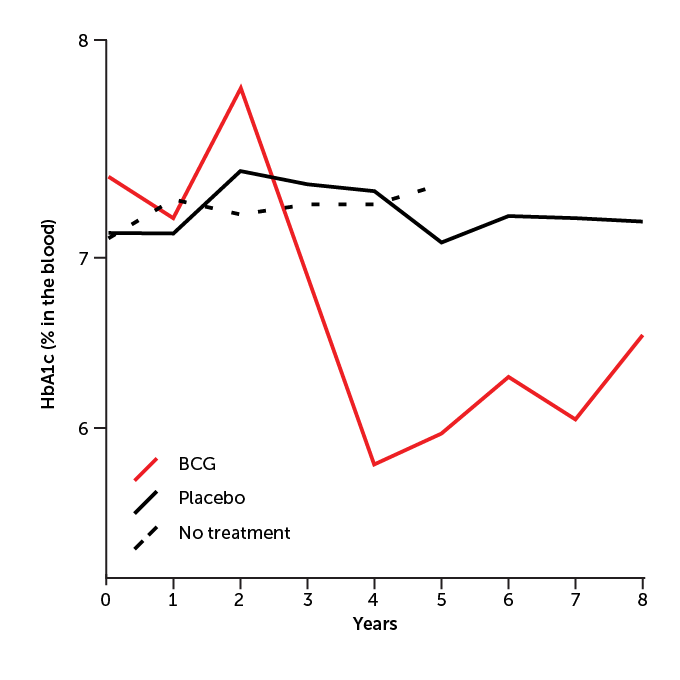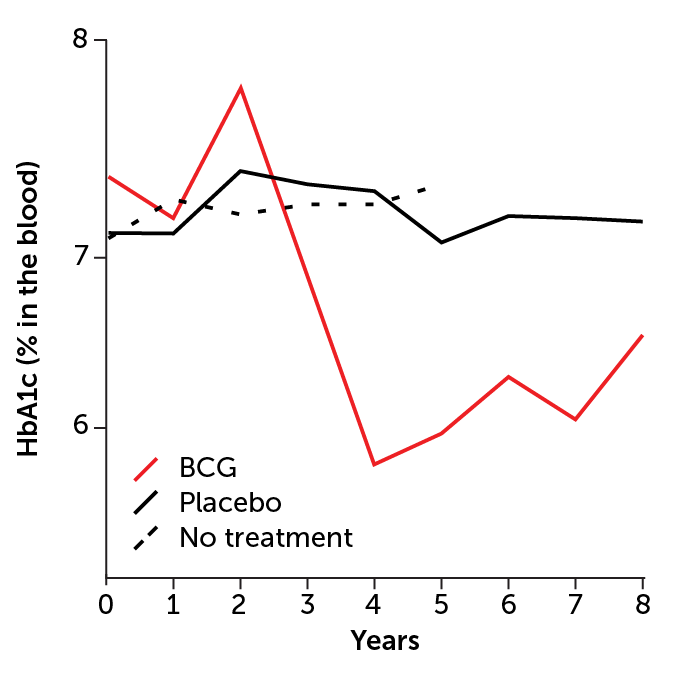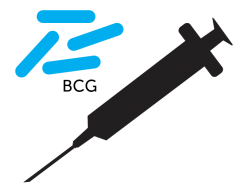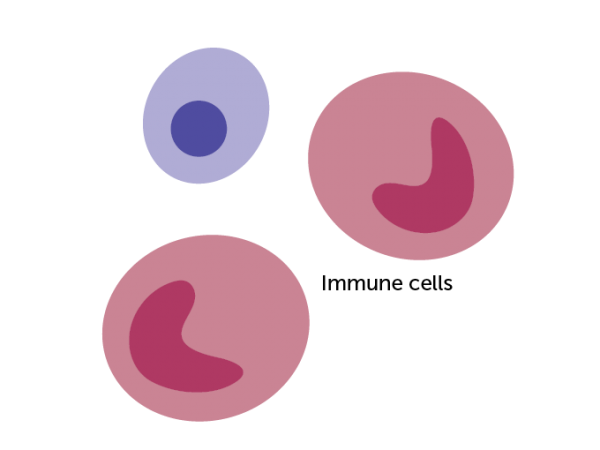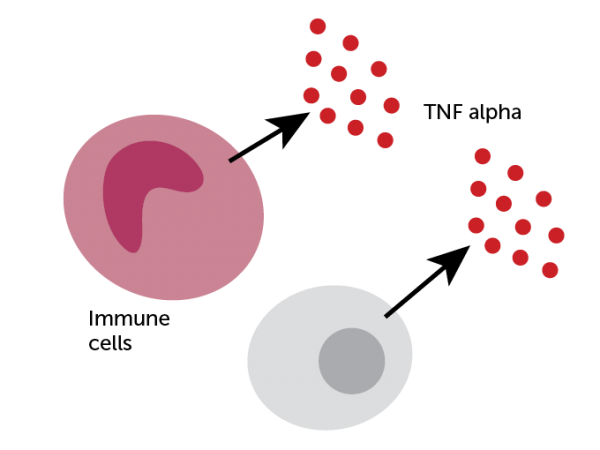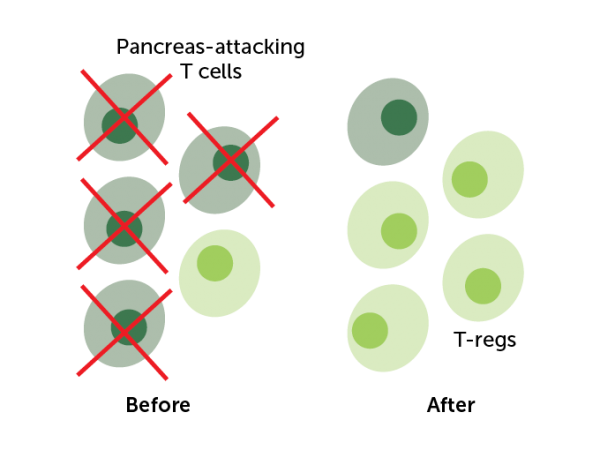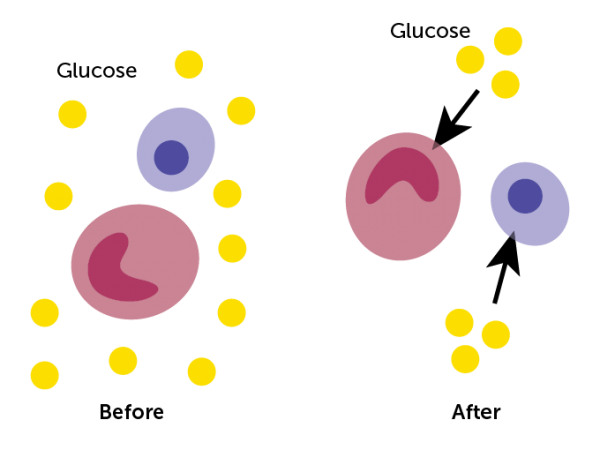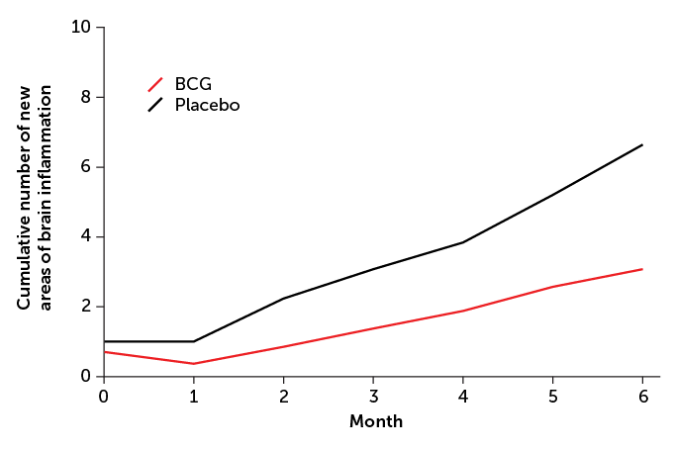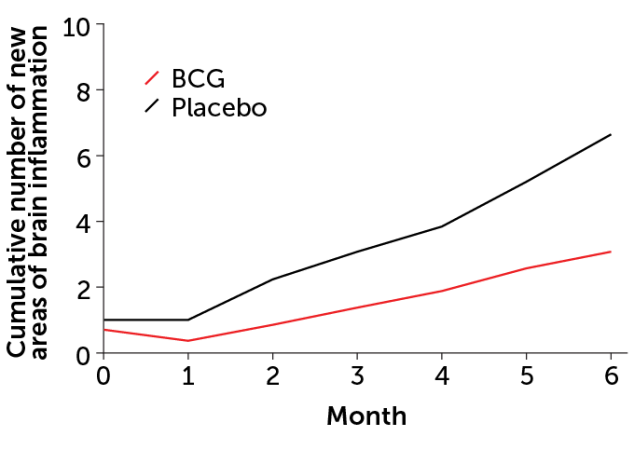This post was originally published on this site
Around the world, volunteers are getting a vaccine developed to prevent tuberculosis in studies that have nothing to do with TB. Called Bacillus Calmette-Guérin, or BCG, the shot is being tested as a treatment for type 1 diabetes, Alzheimer’s disease, multiple sclerosis and even COVID-19.
BCG is a live but weakened version of Mycobacterium bovis, a relative of M. tuberculosis, the bacterium that causes the infectious lung disease known as TB. The vaccine has been around for 100 years and is routinely given to children in nearly all non-Western nations.
Almost as soon as BCG was introduced in the 1920s, researchers noticed a drop in infant deaths in some places where the vaccine was used. Later studies revealed that the vaccine protects against a range of infections. Much more recently, a single dose of the vaccine reduced the risk of respiratory infections in elderly study participants compared with those who got a placebo, according to an October 15 report in Cell.
The vaccine appears to boost immunity in some situations, but paradoxically, BCG may also calm an overactive immune system. It’s this soothing effect that made researchers take a look at BCG for autoimmune and inflammatory diseases, including eczema, asthma, allergies and multiple sclerosis. In MS, a disease in which the immune system attacks nerve cells in the brain and spinal cord, BCG appears to slow damage to the brain.
“Everybody kept getting signals, often from human data, saying this microorganism is doing beneficial things … whether it was allergy or autoimmunity or multiple sclerosis or diabetes,” says immunologist Denise Faustman of Harvard Medical School. “Over the last 10 years, that dataset has just grown and grown.” Faustman is testing BCG as a therapy for people with type 1 diabetes. In this autoimmune disease, the immune system attacks insulin-producing cells in the pancreas, leaving the body unable to make the insulin needed to control blood sugar levels.
“Everybody kept getting signals, often from human data, saying this microorganism is doing beneficial things … whether it was allergy or autoimmunity or multiple sclerosis or diabetes.”
Immunologist Denise Faustman, Harvard Medical School
Faustman is in the midst of a 150-person safety and efficacy trial of BCG in adults with type 1 diabetes. Her team previously showed, in a small study published in 2018, that the vaccine can safely improve blood glucose control in patients with long-term disease who continued taking insulin. The vaccine appears to reprogram immune cells to take up extra glucose, her team reported in iScience in May 2020.
Now, she and other researchers are digging into the basic science behind their observations, while also launching clinical trials of BCG in patients with type 1 diabetes, MS and Alzheimer’s. The scientists hope the answers will help drum up support for this line of research, which has drawn skepticism in the scientific community.
An unlikely treatment
Evidence of BCG’s unanticipated effects has been quietly accumulating for decades. In some settings the vaccine reduced the overall rate of infant death by about 30 percent, based on a 2016 systematic review in BMJ of both clinical trials and observational studies. In the 1980s, the vaccine became a standard immune-boosting treatment for people with bladder cancer. In a study reported in 2019 in JAMA Network Open, people who got BCG in childhood had a 2.5-fold lower risk for lung cancer as adults.
But none of this was on Faustman’s radar when her type 1 diabetes research led her to BCG. Her goal was to stop the autoimmune attack on beta cells, the cells in the pancreas that make insulin. Normally, beta cells respond to changes in blood glucose and release just enough insulin to trigger other cells to take up glucose from the blood and burn it up for energy.
In type 1 diabetes, immune system T cells destroy beta cells, so people with the disease must frequently monitor their blood glucose and inject insulin to keep glucose levels within a healthy range. Very high or very low glucose levels can cause coma or death. Over a lifetime, less extreme glucose fluctuations lead to blood vessel damage along with kidney, heart and vision problems.
In the late 1990s and early 2000s, Faustman’s team and others found that a molecule called TNF alpha, which is made by some immune cells, could selectively kill the T cells that attack beta cells. Among its many jobs, TNF alpha fights bacterial infections and helps the body make T regulatory cells, or T-regs, which act as referees to prevent collateral damage during immune responses. For reasons that are not well understood, in people with type 1 diabetes, T-regs are either too few or defective. Faustman and others found that TNF alpha boosted T-reg numbers and activity in mice and in human cells.
But giving TNF alpha directly wasn’t an option; it was expensive and hard to administer safely. So Faustman’s team searched for something that could trigger immune cells to make TNF alpha on their own. “The answer that kept popping up was BCG,” Faustman says.
Another research group led by immunologist Bhagirath Singh, then at the University of Alberta in Edmonton, Canada, had found in the 1990s that BCG and a related immune stimulant called complete Freund’s adjuvant, or CFA, could prevent type 1 diabetes in mice prone to the disease. CFA, which is made with dead M. tuberculosis, also protected pancreatic cell transplants in diabetic mice from destruction by the immune system.
Faustman’s team found similar results, as well as that diabetic mice given CFA began producing their own insulin; their pancreases seemed to be healing. The finding was intriguing, but in type 1 diabetes research, Faustman cautions, “everything works in the mouse.”
In 1994, an Israeli team used BCG and got blood sugar under control, with very little insulin use, in children recently diagnosed with the disease. The results, however, could not be replicated.
That didn’t deter Faustman. There are at least a dozen strains of the BCG organism used for vaccines, and scientists have learned that different strains have different effects on the immune system. Faustman’s team screened several strains to find one that could trigger TNF alpha and shift the balance between autoimmune T cells and T-regs in samples of white blood cells from people with type 1 diabetes.
With a strain in hand that worked, Faustman’s team recruited three adults who had been living for many years with type 1 diabetes, and had never been vaccinated with BCG. Each person got two injections of BCG, four weeks apart. The volunteers continued using insulin while their blood was checked for changes to T cells and levels of hemoglobin A1c, or HbA1c, which tells how well-controlled glucose is in the blood.
During the 20-week study, the researchers saw small changes to T cells, but no big improvement in HbA1c, the measurement that really matters to type 1 diabetes patients.
Wait for it
By this time, Faustman had met researchers from Rome who had found that BCG could reduce the likelihood that people with brain inflammation would develop multiple sclerosis — but the effect was most apparent after months to years. With this longer time frame in mind, Faustman checked in with the patients from her study annually to measure HbA1c levels. After year three, “the HbA1c’s were down 10 to 18 percent,” Faustman says. “It was not subtle.”
To put that into context, for every 10 percent drop in HbA1c, the risks of diseases caused by blood vessel damage — a major problem in people with diabetes — drop 25 to 44 percent. Faustman’s team added six more patients to the study, and all nine volunteers went at least three years with near-normal blood sugar levels. Three of those patients maintained these levels for five years, the team reported in npj Vaccines in 2018. And none of the patients reported episodes of blood sugar dropping too low.
The HbA1c shift was exciting, but Faustman was perplexed when she looked for its cause. The patients’ T-regs were more active, as expected, but levels of natural insulin did not go up, suggesting something else was helping to control blood sugar.
A clue came from the breakdown products, or metabolites, in the patients’ blood made when cells use glucose. Those metabolites were more abundant in the blood after patients received BCG. Faustman’s group also found that before BCG treatment, patients had lower levels of the metabolites than healthy people, which the researchers confirmed by studying blood from another 100 patients with type 1 diabetes.
Looking more closely, the team found that white blood cells — specifically monocytes — from people with type 1 diabetes took up less glucose than did the same cells in healthy people. But exposing patients’ monocytes to BCG in the lab corrected this defect in glucose metabolism, the researchers reported last year in iScience.
In the same study, the researchers gave a new group of patients three BCG injections in a year and observed that genes related to breaking down glucose were more active in the patients’ T cells and monocytes than before the shots.
“BCG was taking these underlying defects in diabetics, both in the immune system and metabolism, and correcting them towards normal,” Faustman says. BCG seems to give the patients a new way to dispose of glucose, she says.
Hope or hype?
Faustman’s work has generated a wide range of reactions from people within the type 1 diabetes community. Patients are excited by the possibility of an inexpensive treatment that, while not a cure, could make life easier. With type 1 diabetes on the rise, currently affecting 1.6 million people in the United States, and with the high cost of insulin, anything that could help patients regulate blood sugar without increasing insulin doses could have a big impact.
“Even if it’s in addition to current insulin therapy, it’s a great hope.”
Pediatric endocrinologist Siham D. Accacha, NYU Long Island School of Medicine
“Even if it’s in addition to current insulin therapy, it’s a great hope,” says Siham D. Accacha, a pediatric endocrinologist at NYU Long Island School of Medicine in Mineola, N.Y. Managing glucose levels takes a physical, mental and emotional toll on patients and their families, she says. Wearable glucose monitors and automatic insulin pumps help, but “we don’t have a treatment that could help improve blood sugar from inside,” she says. If BCG has a chance of doing that, she says, “I think it’s worth a try.”
Accacha adds that BCG has a long safety record; its risks are minuscule compared with other treatments for type 1 diabetes, such as drugs that suppress the immune system, which increases infection risk, or pancreas transplants, which also require immune suppression.
Faustman says patients are also encouraged by the findings because the research included people who have been living with diabetes for a long time, an average of 19 years. Most, if not all, other studies recruit only newly diagnosed people, says David Leslie, an endocrinologist at the University of London. “Anything that could work in established type 1 diabetes is a big deal,” he says.
On the flip side, some diabetes researchers and organizations have expressed concerns that Faustman’s work might generate false hope. Most recently, during the 2018 meeting of the American Diabetes Association, that organization, along with JDRF (formerly the Juvenile Diabetes Research Foundation), released a statement noting the small size of Faustman’s 2018 study, and that all of the volunteers continued taking insulin.
In an e-mail to Science News, a JDRF representative reiterated the original statement, adding: “We want every researcher in our field to be successful and we will be monitoring the progress made by Dr. Faustman.” Several type 1 diabetes researchers turned down requests to comment on Faustman’s latest work, including one who cited the small number of patients involved as a reason.
Leslie agrees that more data are needed to back up Faustman’s claims. He says he has heard negative reactions to Faustman’s work in private, but he doesn’t think they’re warranted. “It’s an interesting idea,” he says, one that “we shouldn’t throw away.”
Faustman has not received any BCG funding from two of the biggest type 1 diabetes research funders: the U.S. National Institutes of Health and JDRF. She says she thinks that’s because the work “flies in the face” of the field’s main efforts over the last 20 years, which include managing glucose levels with pumps and monitors, and detecting and treating type 1 diabetes as early as possible.
Faustman’s BCG work has been supported by private donors, including the Iacocca Family Foundation in Boston, or through fundraising by patients and their families. Because BCG is a generic vaccine costing an average of 50 cents a dose, there is little incentive for drug developers to pour money into studies for new uses. “It’s not sexy or money-making at all,” says Singh, whose own funding for studying BCG-related work dried up in 2001.
“The data will have to speak for themselves,” says Ofer Levy, director of the precision vaccines program at Boston Children’s Hospital. Levy studies BCG and is familiar with Faustman’s work. He says no one is encouraging people with diabetes to get in line for a shot of BCG. “We need rigorous clinical data,” he says. “But I do think that it’s a plausible hypothesis and very exciting area of research.”
Eyes on the off-targets
Faustman is part of a growing community of researchers who study BCG and its unintended effects. She calls them “off-target people.”
One of those researchers is Mihai Netea, an immunologist at the Radboud University in the Netherlands. He and his colleagues have shown that BCG triggers trained immunity, a nonspecific sort of memory that readies immune cells to react more strongly to any pathogen later on. It’s thought that this is how, in human studies, it protects against bacterial and viral infections, and is what’s led several research groups to test it as a prevention against COVID-19.
Netea’s team also reported in 2016 in Cell Reports that one shot of BCG triggers healthy volunteers’ monocytes to break down glucose at a higher rate, and increases the activity of genes required for glucose metabolism within the cells. Netea says he isn’t sure that these changes in immune cells are enough to affect glucose levels throughout the whole body, as Faustman posits.
In its ongoing trial, Faustman’s team is using radioactive glucose PET scanning to map out where the glucose goes after BCG vaccination. So far, they’ve seen increased glucose uptake in some of the places where monocytes and other immune cells are found, such as the spleen, bone marrow and descending aorta. After two years, she says, the liver starts to take up more glucose as well, suggesting it may play a role in BCG’s effect on blood glucose levels.
Faustman has teamed up with Harvard neurologist Steven Arnold to test BCG in Alzheimer’s patients. The breakdown of glucose is lower than normal in the brains of people with the disease, research has shown. Faustman thinks BCG may offer a reboot of glucose metabolism.
In 2019, a research team from Israel reported in PLOS ONE that among people treated for bladder cancer about a decade earlier, 2.4 percent who got BCG developed Alzheimer’s while 8.9 percent of those who didn’t developed the disease. Arnold’s study will enroll 30 people with early Alzheimer’s to receive two shots of BCG or a placebo four weeks apart. His team will measure patients’ cognitive abilities and biomarkers of disease in blood and cerebrospinal fluid over three months.
Faustman’s colleagues in Italy, neurologists Marco Salvetti and Giovanni Ristori of Sapienza University of Rome, have been pursuing BCG as a treatment for multiple sclerosis since the late 1990s. In a pilot study of 12 people with MS, Salvetti, Ristori and colleagues found that BCG reduced the patients’ chances of developing new areas of nerve cell damage in the brain.
For a second trial, the team recruited people who had not yet developed MS, but experienced one episode of MS symptoms, such as vision loss or muscle weakness. Thirty-three of those volunteers got one shot of BCG while 40 got a placebo. Over five years, those who got the vaccine were less likely to develop new or worsened areas of brain damage or experience disease flare-ups compared with people who received a placebo. By the end of the study, 70 percent of the placebo group had clinically diagnosed MS, compared with 42 percent of the vaccinated group, the team reported in 2014 in Neurology.
The Sapienza team has started another placebo-controlled trial recruiting people with signs of neurological damage that had been discovered by chance in MRIs done for unrelated reasons. People with this kind of damage have a high risk of developing MS after several years. Salvetti says he hopes to find out if BCG can serve as an option to lower these people’s risk for MS.
Salvetti is working with immunologist Giuseppe Matarese of the University of Naples Federico II to study the trial participants’ T-regs. Matarese’s group has found that T-regs from MS patients have trouble multiplying. In studies of mice with MS-like symptoms, BCG increases T-reg numbers. Matarese’s team plans to see if it does the same in people. The group is also examining T-regs from healthy volunteers given a single BCG shot in a separate study led by Netea.
Faustman continues to study T-regs. Although her earlier work suggests that BCG boosts breakdown of glucose in people with long-standing type 1 diabetes, she hopes to learn if T-regs can help those more recently diagnosed, whose beta cells may still have a chance to recover. Her team is testing this in a trial of 25 people with newly diagnosed disease. So far, patients in this trial who are under age 21 have experienced drops in HbA1c levels one and two years after receiving BCG, which the team reported last October at the virtual 2020 Federation of Clinical Immunology Societies meeting.
Faustman’s group is halfway through its 150-person Phase II clinical trial, and expects to finish in 2023. She presented unpublished data at the meeting suggesting that the shot increases the activity of a gene required for T-reg production. The HbA1c data are still being analyzed.
In early 2021, she asked the U.S. Food and Drug Administration for approval to start a trial in children with type 1 diabetes, but the agency asked her for more animal data. She hopes to go back to ask again later this year.
Accacha, whose practice would participate in the trial, says her patients’ parents are very interested in Faustman’s work, and eager to enroll their children. “They ask me every year, ‘What’s going on?’ ”
